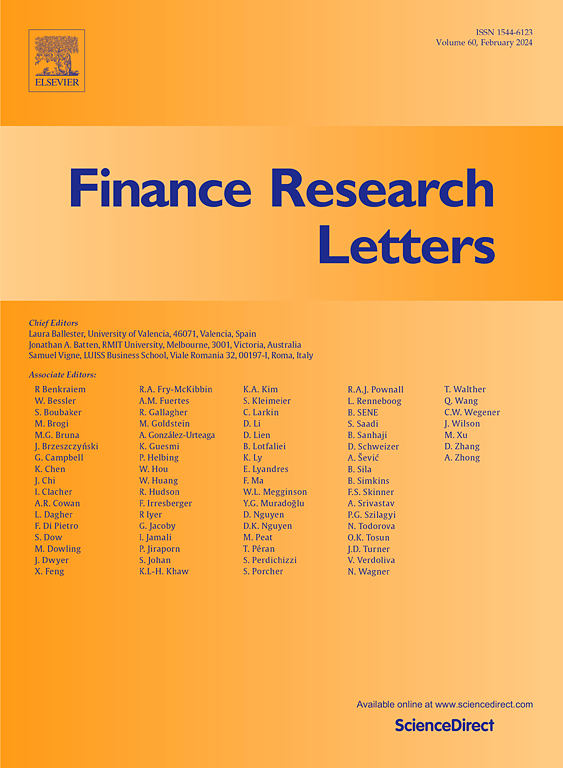Financial frictions, information constraints, and labor market inefficiencies: A macro-financial perspective
IF 7.4
2区 经济学
Q1 BUSINESS, FINANCE
引用次数: 0
Abstract
This paper develops a continuous-time search-and-matching model that integrates two key labor market frictions—imperfect information and financial constraints—into the Diamond-Mortensen-Pissarides framework. By endogenizing these frictions, we offer a new explanation for persistent unemployment, asymmetric recoveries, and endogenous hysteresis. The model shows how informational distortions and liquidity constraints jointly suppress search effort and vacancy posting, leading to nonlinear dynamics and friction-induced thresholds, where temporary shocks have lasting effects. We derive closed-form expressions for job-finding rates, market tightness, and steady-state unemployment as functions of these frictions. Empirical extensions demonstrate how compounded constraints affect low-skilled workers, how frictions evolve with unemployment duration, and how macroeconomic shocks amplify scarring through feedback loops. Policy analysis suggests that targeting both worker- and firm-side frictions, through interventions like digital matching tools, liquidity support, hiring subsidies, and credit access, is essential for reducing unemployment persistence and recovery asymmetries. This approach provides a tractable framework for understanding labor market inefficiencies.
金融摩擦、信息约束和劳动力市场效率低下:宏观金融视角
本文开发了一个连续时间搜索与匹配模型,该模型将两个关键的劳动力市场摩擦——不完全信息和金融约束——整合到Diamond-Mortensen-Pissarides框架中。通过内生这些摩擦,我们为持续失业、不对称复苏和内生滞后提供了新的解释。该模型显示了信息扭曲和流动性约束如何共同抑制搜索努力和空缺发布,导致非线性动力学和摩擦诱发阈值,其中临时冲击具有持久影响。我们推导出了作为这些摩擦函数的就业率、市场紧张度和稳态失业率的封闭表达式。实证扩展展示了复合约束如何影响低技能工人,摩擦如何随失业持续时间演变,以及宏观经济冲击如何通过反馈循环放大伤疤。政策分析表明,通过数字匹配工具、流动性支持、招聘补贴和信贷获取等干预措施,同时针对工人和企业方面的摩擦,对于减少失业持续性和复苏不对称至关重要。这种方法为理解劳动力市场的低效率提供了一个易于处理的框架。
本文章由计算机程序翻译,如有差异,请以英文原文为准。
求助全文
约1分钟内获得全文
求助全文
来源期刊

Finance Research Letters
BUSINESS, FINANCE-
CiteScore
11.10
自引率
14.40%
发文量
863
期刊介绍:
Finance Research Letters welcomes submissions across all areas of finance, aiming for rapid publication of significant new findings. The journal particularly encourages papers that provide insight into the replicability of established results, examine the cross-national applicability of previous findings, challenge existing methodologies, or demonstrate methodological contingencies.
Papers are invited in the following areas:
Actuarial studies
Alternative investments
Asset Pricing
Bankruptcy and liquidation
Banks and other Depository Institutions
Behavioral and experimental finance
Bibliometric and Scientometric studies of finance
Capital budgeting and corporate investment
Capital markets and accounting
Capital structure and payout policy
Commodities
Contagion, crises and interdependence
Corporate governance
Credit and fixed income markets and instruments
Derivatives
Emerging markets
Energy Finance and Energy Markets
Financial Econometrics
Financial History
Financial intermediation and money markets
Financial markets and marketplaces
Financial Mathematics and Econophysics
Financial Regulation and Law
Forecasting
Frontier market studies
International Finance
Market efficiency, event studies
Mergers, acquisitions and the market for corporate control
Micro Finance Institutions
Microstructure
Non-bank Financial Institutions
Personal Finance
Portfolio choice and investing
Real estate finance and investing
Risk
SME, Family and Entrepreneurial Finance
 求助内容:
求助内容: 应助结果提醒方式:
应助结果提醒方式:


